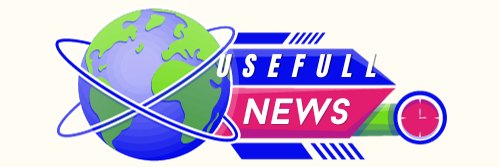A Tangle of Webs: Exploring the Complexity of Spider Silk
A Tangle of Webs: Exploring the Complexity of Spider Silk
Summer marks the official kickoff for movie enthusiasts. From May to August, studios unveil a plethora of films, spanning across genres, aiming to enthrall audiences. Whether it’s animated delights for the young, lighthearted comedies, or high-budget superhero spectacles, the summer film lineup is a treasure trove. In 2014, Sony Pictures, in collaboration with director Marc Webb, introduced “The Amazing Spider-Man 2,” the sequel to the 2012 blockbuster. The burning question – would Spidey’s next adventure soar high in the summer skies or vanish into the abyss of forgettable films? It’s a time for cinematic excitement; let’s see if Spider-Man lives up to the buzz!

THE STORY
Following the events of The Amazing Spider-Man, Peter Parker (Andrew Garfield) struggles to maintain a balance between his life as a superhero and his responsibilities. He faces the challenge of keeping his vigilante activities hidden from his aunt, caring for the city, and navigating a complicated relationship with Gwen Stacy (Emma Stone). Meanwhile, Max Dillon (Jamie Foxx) transforms into Electro after an accident, gaining formidable electrical powers. As Electro becomes a new adversary for Spider-Man, Harry Osborn (Chris Cooper) returns to New York, seeking a cure for a fatal genetic condition. This journey unravels secrets about Peter’s parents and sets the stage for a complex web of interlinked destinies.
THE GOOD / THE BAD
The film represents the second chapter in the rebooted Spider-Man series, featuring a younger cast to explore the hero’s beginnings in New York City. While this reboot offers an intriguing take, it may seem somewhat redundant. The original Spider-Man trilogy, starring Tobey Maguire, had its highs and lows but resonated with many viewers. Both the old and new versions share similarities, as they depict the web-slinging hero navigating New York, experiencing love, and battling supervillains. The transition from the 1997 film “Batman & Robin” to “Batman Begins” in 2005 worked as a reimagining, but the Spider-Man reboots, including “The Amazing Spider-Man,” feel interconnected rather than distinct.
Q1: What makes spider silk a unique and remarkable material in the natural world? A1: Spider silk is renowned for its exceptional strength and flexibility. Discuss the specific characteristics that make spider silk unique, such as its tensile strength, lightweight nature, and versatility.
Q2: How do spiders produce silk, and what biological processes are involved in the creation of different types of silk? A2: Explore the intricate biological processes behind spider silk production. Discuss the specialized glands, spinnerets, and silk proteins involved, as well as the different types of silk spiders produce for various purposes.
Q3: What are the diverse applications of spider silk in nature, and how have these evolved to serve specific functions for different spider species? A3: Investigate the various applications of spider silk in nature, including web construction, prey capture, and silk for shelter. Explore how different spider species have evolved unique uses for their silk based on their ecological needs.
Q4: How does the composition of spider silk contribute to its remarkable strength and elasticity, and how does it compare to other materials in terms of these properties? A4: Examine the molecular composition of spider silk and how it contributes to its strength and elasticity. Compare these properties to other materials, highlighting the potential applications and advantages of spider silk.
Q5: Are there specific environmental factors or external influences that can affect the production and properties of spider silk? A5: Discuss environmental factors or external influences, such as temperature, humidity, or diet, that can impact the production and properties of spider silk. Explore how spiders adapt to different conditions.
Q6: What advancements or breakthroughs have been made in replicating or harnessing spider silk for industrial and medical purposes? A6: Highlight any scientific advancements in replicating or harnessing spider silk for various applications. This could include efforts to produce synthetic spider silk for use in textiles, medical devices, or other industries.
Q7: How might the study of spider silk contribute to materials science and the development of innovative technologies? A7: Explore the potential applications of spider silk in materials science and technology. Discuss how insights from the study of spider silk could inspire new materials with unique properties.
Q8: Are there challenges or limitations in harnessing spider silk for mass production, and what research is being conducted to address these obstacles? A8: Discuss any challenges or limitations in mass-producing spider silk and ongoing research aimed at overcoming these obstacles. This could include issues related to scalability, cost, or ethical considerations.
Q9: How do spiders use silk for communication, mating rituals, and other social behaviors, and what role does silk play in their overall ecology? A9: Explore the social and ecological aspects of spider silk. Discuss how spiders use silk for communication, mating, and other social behaviors, contributing to the overall ecology of their habitats.
Q10: What ethical considerations should be taken into account when researching or utilizing spider silk, and how can scientists balance innovation with environmental and ethical concerns? A10: Discuss the ethical considerations associated with researching and utilizing spider silk. Explore how scientists can balance the pursuit of innovation with environmental sustainability and ethical concerns, especially in the context of potential large-scale production.
